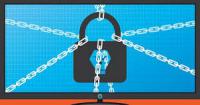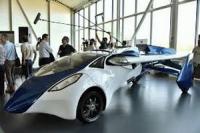-
Defending the Earth from asteroids

A mere 17-20 meters across, the Chelyabinsk meteor caused extensive ground damage and numerous injuries when it exploded on impact with Earth’s atmosphere in February 2013. To prevent another such impact, researchers use a simple yet ingenious way to spot these tiny near-Earth objects (NEOs) as they hurtle toward the planet.
-
-
Identifying new way to improve cybersecurity

With cybersecurity one of the nation’s top security concerns and billions of people affected by breaches last year, government and businesses are spending more time and money defending against it. Researchers have identified a new way to improve network security.
-
-
Sensing earthquakes in a new way to help improve early warning systems
Every year earthquakes worldwide claim hundreds or even thousands of lives. Forewarning allows people to head for safety and a matter of seconds could spell the difference between life and death. Researchers demonstrate a new earthquake detection method — their technique exploits subtle telltale gravitational signals traveling ahead of the tremors. Future research could boost early warning systems.
-
-
Novel compact antenna for communicating where radios fail
A new type of pocket-sized antenna could enable mobile communication in situations where conventional radios don’t work, such as under water, through the ground and over very long distances through air. The 4-inch-tall device could be used in portable transmitters for rescue missions and other challenging applications demanding high mobility.
-
-
New sensors can sense and sort troublesome gases
From astronauts and submariners to miners and rescue workers, people who operate in small, enclosed spaces need good air quality to work safely and effectively. Newly developed electronic sensors can simultaneously detect at least three critical parameters that are important to monitor to ensure human comfort and safety.
-
-
Accurately predicting harmful space weather’s “killer” electrons

A new space weather model reliably predicts space storms of high-energy particles that are harmful to many satellites and spacecraft orbiting in the Earth’s outer radiation belt. The model can accurately give a one-day warning prior to a space storm of ultra-high-speed electrons, often referred to as “killer” electrons because of the damage they can do to spacecraft such as navigation, communications, and weather monitoring satellites.
-
-
Flying cars: automating the skies means playing with our lives

Recent research suggests that flying cars could eventually be a sustainable way to free up roads. The first models are set to hit our skies in 2019 as personal playthings, while industry sees them as taxis and commuter vehicles of the future. But as Harry Potter’s encounter with the Whomping Whillow reminds us, flying cars can be dangerous. Before futuristic visions of three-dimensional sprawling city traffic can approach reality, there are some serious safety issues that need addressing.
-
-
New device creates electricity from snowfall
Researchers and colleagues have designed a new device that creates electricity from falling snow. The first of its kind, this device is inexpensive, small, thin and flexible like a sheet of plastic.
-
-
Biologically inspired network protection software
Electrical engineers look to the human immune system for clues on how to best protect digital networks. It’s a concept that’s beginning to be explored more and more by researchers in a variety of fields: What does the human body do well and how can we adapt those mechanisms to improve technology or engineering systems?
-
-
Flying colors: Assessing the role of flying cars in sustainable mobility

A new study of the environmental sustainability impacts of flying cars, formally known as electric vertical takeoff and landing aircraft, or VTOLs, finds that they wouldn’t be suitable for a short commute. However, VTOLs—which combine the convenience of vertical takeoff and landing like a helicopter with the efficient aerodynamic flight of an airplane—could play a niche role in sustainable mobility for longer trips.
-
-
China catching up to the U.S. in innovation
If China is only a copier, not an innovator, then the competitive threat it poses to advanced economies would be limited. But there is no reason to believe China won’t follow the path of “Asian tigers” that rapidly evolved from copiers to innovators, which poses a serious threat.
-
-
Detecting, analyzing suspicious activity in surveillance footage

Traditional surveillance cameras do not always detect suspicious activities or objects in a timely manner. Researchers developed a hybrid lightweight tracking algorithm known as Kerman (Kernelized Kalman filter).
-
-
Making scalable on-chip security pervasive
For the past decade, cybersecurity threats have moved from high in the software stack to progressively lower levels of the computational hierarchy, working their way towards the underlying hardware. The rise of the Internet of Things (IoT) has driven the creation of a rapidly growing number of accessible devices and a multitude of complex chip designs needed to enable them. A new DARP program focuses on addressing the economic and technical challenges associated with incorporating scalable defense mechanisms into chip designs.
-
-
Making scalable on-chip security pervasive
For the past decade, cybersecurity threats have moved from high in the software stack to progressively lower levels of the computational hierarchy, working their way towards the underlying hardware. The rise of the Internet of Things (IoT) has driven the creation of a rapidly growing number of accessible devices and a multitude of complex chip designs needed to enable them. A new DARP program focuses on addressing the economic and technical challenges associated with incorporating scalable defense mechanisms into chip designs.
-
-
U.S. industries turn to feds for help in economic race with China
In the U.S. economic battle with China, the Chinese government is often portrayed as a kingmaker, making large investments in research and paving the way for Chinese companies to thrive. China, it turns out, is a good foil for U.S. industries as they ask the U.S. government to do more to help them compete globally.
-
More headlines
The long view
New Technology is Keeping the Skies Safe
DHS S&T Baggage, Cargo, and People Screening (BCP) Program develops state-of-the-art screening solutions to help secure airspace, communities, and borders
Factories First: Winning the Drone War Before It Starts
Wars are won by factories before they are won on the battlefield,Martin C. Feldmann writes, noting that the United States lacks the manufacturing depth for the coming drone age. Rectifying this situation “will take far more than procurement tweaks,” Feldmann writes. “It demands a national-level, wartime-scale industrial mobilization.”
How Artificial General Intelligence Could Affect the Rise and Fall of Nations
By Barry Pavel et al.
Visions for potential AGI futures: A new report from RAND aims to stimulate thinking among policymakers about possible impacts of the development of artificial general intelligence (AGI) on geopolitics and the world order.
Keeping the Lights on with Nuclear Waste: Radiochemistry Transforms Nuclear Waste into Strategic Materials
By John Domol
How UNLV radiochemistry is pioneering the future of energy in the Southwest by salvaging strategic materials from nuclear dumps –and making it safe.
Model Predicts Long-Term Effects of Nuclear Waste on Underground Disposal Systems
By Zach Winn
The simulations matched results from an underground lab experiment in Switzerland, suggesting modeling could be used to validate the safety of nuclear disposal sites.
